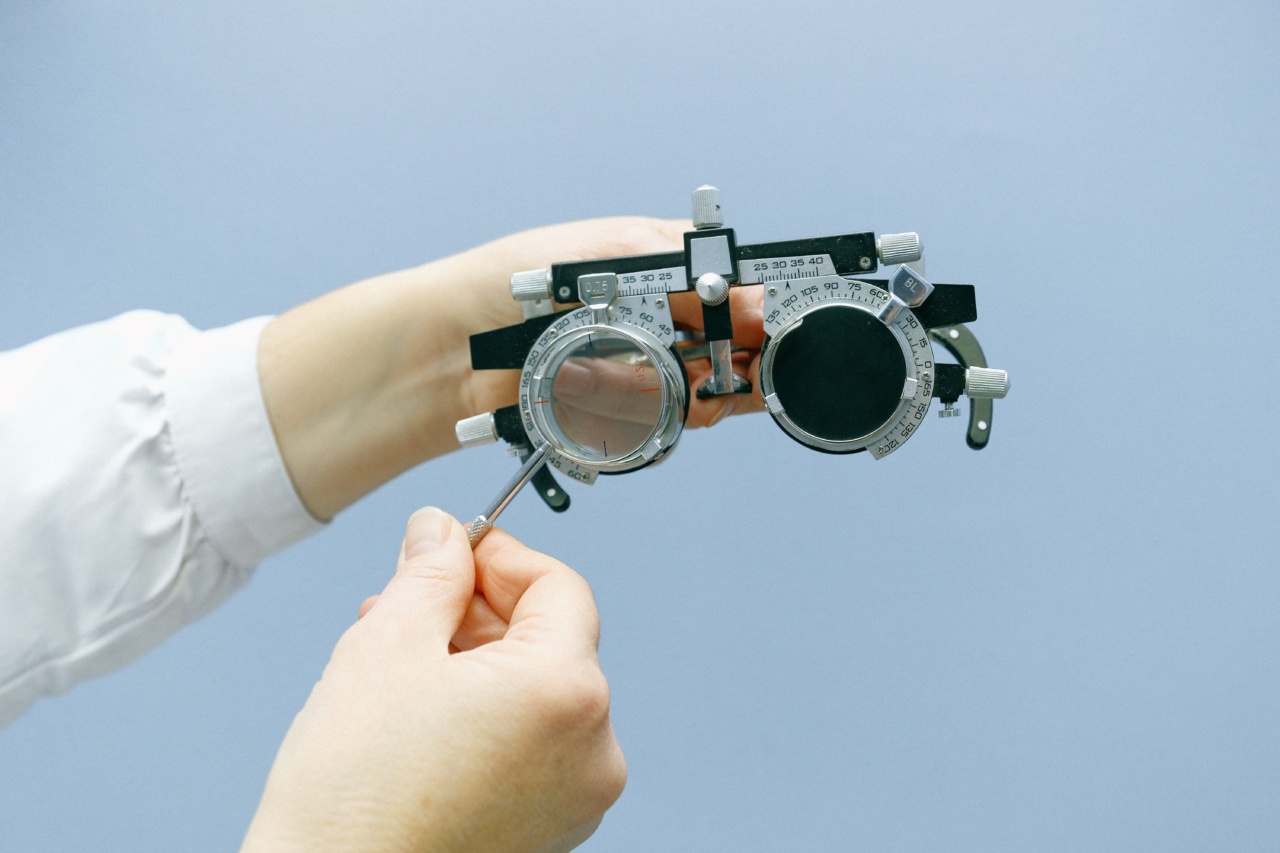When most people think of visiting their eye doctor, they likely assume it’s just to get their vision checked and possibly receive a new prescription for glasses or contacts.
However, many don’t realize that eye doctors can also detect several other health conditions during an eye exam. Here are some of the surprising conditions your eye doctor can detect:.
1. Diabetes
If you have diabetes, your eye doctor may be able to detect it during a routine eye exam. That’s because high blood sugar levels can cause damage to the small blood vessels in your retina, which can lead to a condition called diabetic retinopathy.
Your eye doctor can check for this by looking for changes in the blood vessels, swelling, or blood leakage in the retina. If these issues are present, they may recommend that you get further testing to confirm a diabetes diagnosis.
2. High Blood Pressure
High blood pressure, or hypertension, can also be detected during an eye exam. This is because the small blood vessels in your eyes may show signs of damage, much like they do in diabetic retinopathy.
Your eye doctor may also notice that the blood vessels in your retina appear twisted or narrowed, which can be a sign of high blood pressure. If these issues are detected, your eye doctor may recommend that you see your primary care doctor to get your blood pressure checked and treated if necessary.
3. Autoimmune Disorders
Autoimmune disorders, such as rheumatoid arthritis and lupus, can also be detected during an eye exam. If you have these conditions, you may experience inflammation in the eye that can be seen by your eye doctor.
In some cases, certain autoimmune disorders can also cause changes in the blood vessels in the retina. If your eye doctor suspects that you have an autoimmune disorder, they may refer you to a specialist for further testing and treatment.
4. Thyroid Disease
Thyroid disease can also be detected during an eye exam. In some cases, an overactive thyroid (hyperthyroidism) can cause the muscles that control eye movement to swell, leading to bulging eyes.
This condition is called Graves’ disease, and your eye doctor can detect it by looking at your eyes and measuring your eye pressure. They may also be able to detect an underactive thyroid (hypothyroidism) by looking for thinning of the eyebrows.
5. Cancer
In some cases, eye exams can detect certain types of cancer, such as melanoma. This is because melanoma can occur in the eye, specifically in the uveal tract.
Your eye doctor may be able to detect these tumors during a routine eye exam by examining the iris, lens, and retina. If a tumor is detected, your eye doctor may refer you to a specialist for further testing and treatment.
6. Brain Tumors
Eye exams can also detect brain tumors, specifically those located in the pituitary gland. This is because the pituitary gland is located near the optic nerve, which is responsible for transmitting visual signals from your eyes to your brain.
A tumor on the pituitary gland can press on the optic nerve, leading to changes in vision that your eye doctor may be able to detect. If your eye doctor suspects that you have a brain tumor, they may refer you to a specialist for further testing and treatment.
7. Glaucoma
Glaucoma is a condition that damages the optic nerve, usually due to high pressure inside the eye. This condition can be detected during an eye exam through measurements of the pressure inside the eye and by examining the optic nerve.
If glaucoma is detected, your eye doctor may recommend treatment to prevent further damage to the optic nerve and prevent vision loss.
8. Macular Degeneration
Macular degeneration is a condition that causes damage to the macula, the part of the retina responsible for central vision.
Your eye doctor can detect this condition during an eye exam by examining the retina and looking for signs of damage or changes in the macula. If macular degeneration is detected, your eye doctor may recommend treatment to slow or prevent further damage to the macula.
9. Cataracts
Cataracts are a common age-related condition that causes clouding of the eye’s natural lens. Your eye doctor can detect cataracts during an eye exam by examining the lens and looking for signs of cloudiness or discoloration.
If cataracts are detected, your eye doctor may recommend surgery to remove the clouded lens and replace it with an artificial lens.
10. Vitamin Deficiencies
Vitamin deficiencies, specifically deficiencies of vitamins A, C, and E, can also be detected during an eye exam. This is because these vitamins are important for maintaining healthy vision and preventing age-related eye diseases.
Your eye doctor may be able to detect vitamin deficiencies by examining your retina and looking for signs of damage or changes in the blood vessels.
Conclusion
As you can see, eye exams are about much more than just checking your vision. They can also help detect several other health conditions, from diabetes and high blood pressure to cancer and autoimmune disorders.
That’s why it’s important to schedule regular eye exams with your eye doctor, even if you don’t wear glasses or contacts. By doing so, you can catch these conditions early and get the treatment you need to maintain good health.






























